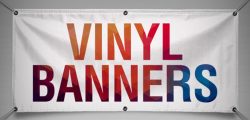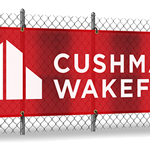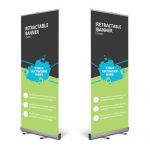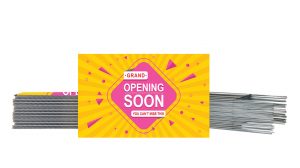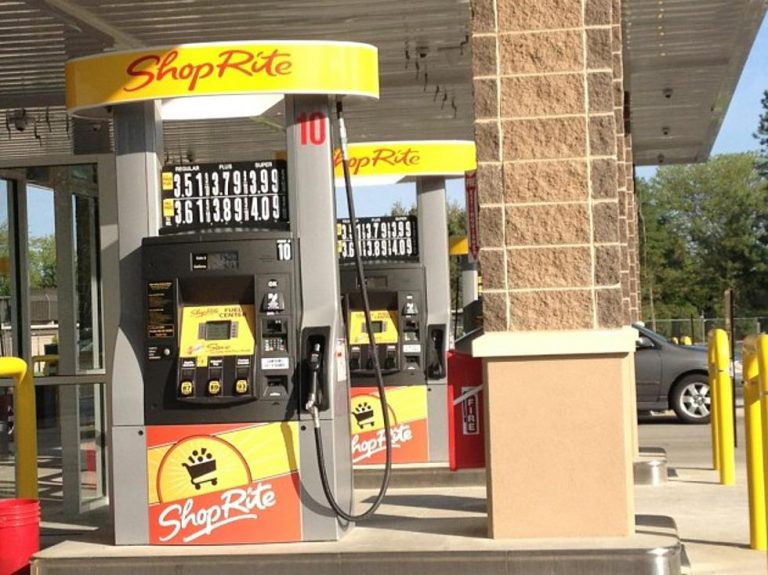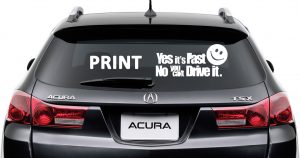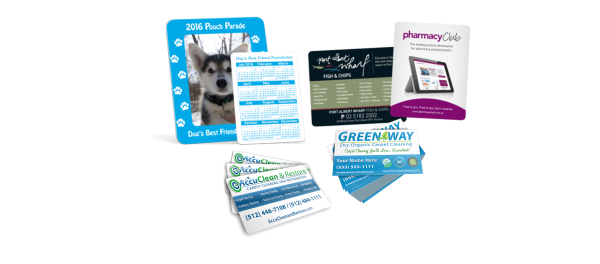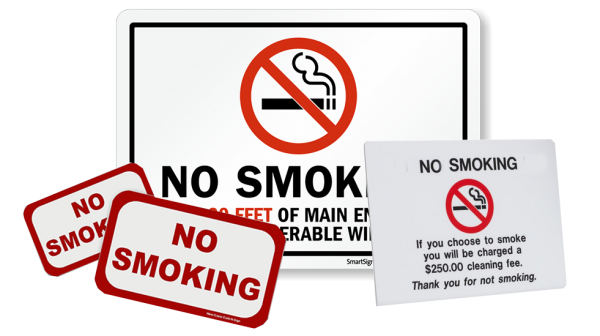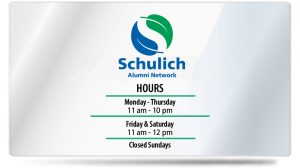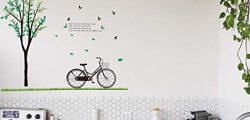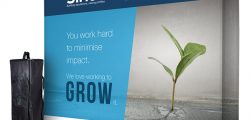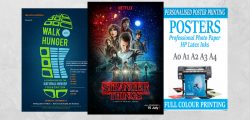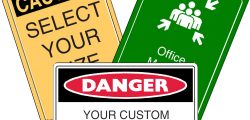Product Specs
Are tension stands the same as fabric tube stands, EZ Tube displays, or stretch stands? What about tension pop ups? And tension displays?
There are a plethora of different names and variations for displays using a stretch or elastic fabric, including fabric tube stands, EZ Tube displays, and stretch stands. While we call it a tension fabric stand, all of these terms are typically interchangeable. In the end, you’re getting a display stand featuring stretch fabric that is extremely portable and most often used for presentations, conferences and events of a similar temporary nature.
The sign name that most often indicates a different type of sign is a pop up display. Pop up displays, as offered and called on our website, do not come with a pole frames but an actual sign that literally pops up and uses a stretch fabric with velcro to adhere to the display unit that collapses for safe travel. These are commonly used as backdrops and are significantly bigger and more expensive than our fabric tension stands as outlined on this page.
Lastly, tension displays are similar to our tension fabric stands in both frame assembly and stretch fabric, but similar to pop up displays are much wider and more commonly used as backdrops at events and tradeshows. Due to the much bigger size of these displays they are more expensive than the smaller tension stands detailed on this page.
So while the alphabet soup of terms may be confusing, we offer a wide variety of event and tradeshow signage and are happy to both answer your questions and help design your sign or display for free!
Do your tension stands have the ability to stretch?
The fabric used is an elastic polyester which has the ability to stretch over the frame of the tension stand. This fabric differs from our regular fabric and vinyl banners, which use non-elastic polyester and vinyl respectively.
What material is the display made of? Are there any other materials available for tension fabric displays?
The display is made from an 8.8 oz. elastic polyester, giving the material a stretchable quality while maintaining exceptional durability and image quality.
What are the differences between the tension stand and your tension fabric display?
The tension stand and tension fabric display both use the elastic fabric material in their displays; the material is fitted over a lightweight aluminum frame to for the completed display. One of the significant differences is the size disparity between these two products. The tension stand measures at 36”x90” or 48”x90”, whereas the tension fabric display comes in 8’x8’ and 10’x10’ variations. Another difference is the stands used in stabilizing the display. The tension stand uses a single metal base that in contrast to the tension fabric display using two metal feet to support it. The final difference is cost. The bigger tension display, primarily used as a backdrop, costs much more than the smaller fabric tension stand that is part of a tradeshow booth or event set up.
How do I ensure that my letters or design will not be cut off when printed onto the tension fabric?
When designing your display, we recommend placing all text and images within an area of 31”x84” (for the 36”x90” tension stand) or 43.5”x84” (for the 48”x90” tension stand).
If you upload your own design file for printing, please upload files that are 38”x91” (36”x90”) and 50.5”x91” (48”x90”) respectively. This will account for the bleed required to print your tension stand. Files at this size and following the safe zone recommendations above will results in a properly printed tension stand!
What are the differences in the materials that you offer for your various displays? Tension fabric versus polyester fabric display and a muslin fabric display? What about canvas, vinyl, and mesh displays?
Tension fabric is a high quality, elastic polyester that is designed to stretch in order to be pulled taut against a display frame. This elastic quality is not offered in standard polyester fabric. Regardless, both standard and elastic polyester are extremely durable and lightweight, making them perfect for display use. Both are printed on using dye sublimation, which infuses the ink directly into the material. This results in a permanent design that is scratch and fade resistant. Tension fabric is used within our tension stand, tension fabric displays, and pop-up displays. Standard polyester can be found in our fabric banners and flag banners.
Muslin fabrics are typically made from a natural cotton-based thread, which is similar to lightweight cotton cloth. Designs are either screen printed or stitched into the material. Muslin displays are usually for indoor decorative purposes only. We do not offer any products made from muslin.
Canvas prints and displays are crafted from a thick linen or cotton blend. Canvas is thicker and more durable than muslin, but does not outclass the durability of polyester. Canvas is used for painting, printing photographs, or decorative displays. We offer canvas photo prints as part of our Signs For Home product line, which is tailored for home decor purposes.
Vinyl is the thickest material, offering incredible durability without compromising versatility and lightweight properties. Our vinyl banners are crafted from a 13 oz. vinyl and are printed on using high quality, vibrant UV ink. Vinyl is sunlight, weather, and water resistant, meaning it can be displayed outdoors without worry of it being damaged.
Can the tension stand be used as a photography backdrop?
Technically, the tension stand can be used as a backdrop, but the size of the display will not create a complete background for a photo. We do not recommend using this as a photo backdrop. However, our tension fabric displays, step and repeat banners, and pop up displays make satisfactory photo backdrops if you’re looking for an alternative to a traditional and true photo backdrop.
How thick are your tension stand displays? Do you offer any other thickness options?
The tension fabric material is 8.8 oz. polyester (about the thickness of 5 sheets of copy paper), which is the ideal thickness for a durable, elastic display. We’ve found that this thickness of fabric is the best for this product and therefore do not offer any other thickness options.
How heavy is the stand or base of the display? Is it easily carried?
The metal base weighs in at 14 lbs and has a handle cut out on one end for ease of carrying. This handle can be seen in the pictures in the photo gallery above.
Does overuse of the fabric display result in the fabric losing its stretchability?
Frequent use of the fabric display should not cause the fabric to lose its elasticity throughout the lifetime of the product (3+ years) with proper care and storage.
What are the minimum and maximum dimensions of your tension stands?
There are no minimum and maximum dimension with our tension stand but rather two set sizes that we currently offer. We currently offer 36”x90” or 48”x90” tension stands. With bleed these are listed on the site as 38”x91” (36”x90”) and 50.5”x91” (48”x90”) respectively.
Is the frame adjustable in size?
The tension stand frame is not adjustable. Nor will a larger graphic fit the smaller frame or vice versa.
Can the frame be adjusted to create a curved display? Do you offer curved tension stands?
The frame is not adjustable to create a curved display. We do not currently offer curved tension stands.
Do you print double-sided tension stands? How do I do this?
Yes, we offer double-sided printing as an option for our tension stands. To order a double-sided tension stand, select the double-sided option (under “Printed Sides”) located in our design tool, then choose if you want the same design for the front and back or if you want to a different design on the back side. You can design the back side of your tension stand by selecting the ‘back side’ button under the design area of our design tool.
Does the fabric display allow light to pass through it? Does it offer a degree of transparency?
The display is not designed to be transparent. Though the fabric does stretch, it allows little to no light through the material of the display. In other words, it is not considered a ‘bleed through’ print regardless of whether it is single or double-sided. There may be cases where faint light is visible on lighter colored designs or when bright lights are displayed directly behind the display.
How does the display attach to the frame?
Quickly and easily attach the display to the frame by pulling it over the top of the frame. The pillowcase-like design allows for ease in pulling it over the frame. The elastic material will fit snug against the frame once the display is fully pulled over it. Use the zipper at the bottom to ensure the display does not slacken or slide off of the frame.
What material is the frame made out of?
The frame is constructed from a lightweight and durable aluminum, which gives the display a rigid frame while offering unmatched portability. The connecting points on the bottom horizontal pole are plastic. The base of the stand is made out of heavy duty aluminum.
Do the aluminum poles have bungee cords inside of them?
No, the aluminum poles do not have bungee cords within them.
If the zipper breaks, is the fabric display portion unusable?
Though it is not necessary to zip the fabric to the frame, it is recommended that you display the tension stand when the zipper is functioning to ensure the display does not slowly slip from the frame. The zipper helps the display remain taut and does so with the greatest aesthetic value. That being said, the stretchable fabric will usually keep your display taut even if the zipper is unzipped or broken.
Will the display sag or bunch up when displayed on the frame?
The display should not sag or bunch up when properly displayed on the frame with the zipper closed. Tension provided by the frame as well as the elastic material of the display will ensure the display is smooth and wrinkle free when fully assembled.
Will my display have seams? Are the edges of the display fabric hemmed?
There are no visible seams or hems on the display portion of the tension stand. There is stitching down the sides of the display that is unnoticeable when displayed. The zipper at the bottom of the display is also not visible when showcasing the tension stand. Both of these aspects of your tension stand can be seen in the photo gallery on this page.
Does my tension stand come with a carrying case?
Yes, a canvas carrying case comes with the purchase of your tension stand. The canvas case has two inner velcro straps to keep the poles from sliding around. It also has two handles for easy travel.
What kind of printing process do you use for your tension stands?
Your design will be printed using a dye sublimation process, which is designed to permanently adhere the ink into the material. The result is a design or image that is vibrant, long lasting, and impervious to scratching or fading.
Are the fabric displays a matte or gloss finish?
Your design and display will have a beautiful and vibrant matte finish that will remain clear when the material is stretched across the frame.
Should I be concerned about the display ripping or tearing?
When properly assembled, displayed, and stored, you should not have to worry about your display ripping. Due to the nature of the fabric material, sharp objects can cause permanent damage if handled near the display. Tension fabrics are also susceptible to tearing or piercing if stored near or on sharp objects.
How do I create a display using a picture or photo?
Creating a picture or photo display is easy. Start by selecting the “Get Started” button on the tension stand product page. Three options will appear, asking you how you want to begin designing your display; select the “Blank Template” option. The “Blank Template” option is also available under our “Popular Templates” section.
Once you’re in our design tool, click on the “Upload Image” button underneath the “Design Tools tab on the left side of the page. Image files can be up to 25MB, so double check to ensure your file size meets that criteria. We recommend using a smaller file size for your initial purchase, then you can upload a high resolution file to upload.signs.com. On our checkout page, make a note that you have uploaded a high resolution file to replace the low res version. We’ll make sure to switch the low resolution file with the high resolution one before printing. Once uploaded to the design tool, you will have the freedom to move the images around, add text, or other design elements if desired.
If this process is confusing at all or if you are in need of assistance, please contact us for free design help or even help in uploading larger files.
Usage
Can I use tension fabric displays outdoors?
Tension fabric displays are specifically designed for indoor use. We do not recommend using tension displays outdoors, as this will decrease the longevity of the display. They also will not work in any kind of inclement weather. We offer a variety of outdoor display displays that can be used as an alternative to a custom tension fabric display if you are looking for an outdoor display or sign.
What are typical uses for your tension fabric displays?
The uses for tension fabric displays are almost limitless. The large display area and portable design provide for an exceptional mobile advertising for businesses at trade shows, conventions, and retail displays. These displays are an effective backdrop for photographs and video at business events, weddings, corporate sponsor dinners, and media interviews. Optional LED lights enhance the aesthetics of the custom tension fabric display.
Can I use a different display with the frame?
The frame used is designed specifically to support a tension fabric display and is not equipped to display a different display type or size. This is true even with the larger tension display we use. The frames and fabric displays of the two sizes are not interchangeable.
Can I use rope or string to secure my display to a solid object?
Since tension fabric displays are designed specifically for indoor use, there is no need to use ropes or string as anchoring. As such, the frame is not designed with anchor points or loops to tie down the frame or fabric display itself.
Will the design on my display fade over time? Is it able to be scratched off?
Your design is printed using dye sublimation which means the ink goes into the fabric to help reduce fading and scratching of the ink. With proper care and storage your design will last for years to come.
If I purchased the optional LED lights how do I set them up?
If you purchased the LED lights your shipment will contain two additional parts for your assembly. These parts are half-moon in shape and go over the top pole. With the attached screw you simply tighten the screw to lock them into place. The bottom of the LED lights is then designed to slide into a corresponding part of the pieces just attached. Simply drop the wires down the backside of your design and connect them to a power source.
How many watts are the LED lights?
Each LED light is 40W. We’ve found that these are perfect to add a touch of light to your beautiful display but not be so overwhelming that it distracts from the display or booth itself.
Installation & Care
How do I set up my tension fabric display?
Assembling your tension fabric display can be done in a few simple steps and is easily done when you follow the instructions included. To help explain the process, we have included a step-by-step list below.
Included in the frame set are 4 main poles and 2 L-shaped pole connectors. The pole frame set employs a push-button locking mechanism that secures the poles together, with an inner bungee cord that aids in the assembly process. The poles are labeled at each end with a numbered sticker, which corresponds to a number on the connecting pole part. The side labeled ‘1’ will attach to another side labeled ‘1’ and so on and so forth. We will refer to the individual poles by the numbers on each end (for example, 2-3 is the top pole and 1-6 is one of the side poles). Construct the frame on the ground to help aid in the ease of assembly.
First, you will insert the side poles (1-6 and 4-5) into the bottom pole (5-6). To insert the poles into the corresponding end, press down on the silver button and push the end of the pole into the opening until the silver button clicks into place. Once each side pole is attached to the base pole, attach the L-shape pole pieces (1-2 and 3-4) to the top pole (2-3). Attach the completed top piece to the two pole sides of the bottom piece.
With the frame constructed it’s time to slip the display over the top of the frame. Have the front of the display facing forward and carefully put the display on the frame as you would slip a pillow case on a pillow. The tension material will allow the display to stretch to fit the frame, creating a snug hold on the frame. When the fabric display is fully over the frame, use the zipper on the bottom of the display to secure it in place on the frame. Place the completed frame set on the bases, which fit into the bottom of the poles at each side of the frame.
Now that the tension display is completed, and with the help of another person, elevate the display to its upright position.
How do I store my display?
We recommend storing your display in the provided carrying case with the fabric display removed from the frame.
Installation & Care
How do I set up my pop up display?
The pop up display is designed to be set up quickly. We recommend setting up the display with more than one person to speed up the process. The velcro on the display is strong, so we recommend not setting up the display on any carpeted surface. If the showroom or area you are setting up has carpet, assemble the display vertically. Horizontal assembly is best if only one person is available to set up the display.
The frame is quickly extended by pulling the sides outward from the center of the frame. Once the frame is completely extended, lock in all of the green support arms. These support arms are connected by a plastic snap mechanism that requires force to push one end into the other. Support arms are secure when the plastic snap is completely over the lip of the other arm. It may be difficult to snap together some of the support arms at first due to lack of tension in the frame. There’s no specific order to snap together the support arms; focus on those that can be snapped together easily and wait to work on those that may be difficult until the end when there is natural tension pushing them together.
Once the support arms are snapped into place, it’s time to put the display fabric on the frame. Do this by starting from one corner of the display, working towards the opposite corner. Since velcro can be difficult to work with, take your time making sure the display fabric is laid smoothly and tautly across the frame. When the front of the display is completely covered, attach the sides of the fabric to either side of the display in the same manner as the front of the display.
With the display fabric fully attached to the frame, stand the completed pop up display upright if you’ve assembled it on the ground or horizontally. You can attach the optional LED lights once the display is completed. Simply slide each light on to the included anchor points at the top of the display frame.
How do I store my display?
We recommend storing your display in the provided carrying case with the fabric display removed from the frame.
My display is wrinkled - how do I remove the wrinkles?
Any wrinkles present on your display can be removed simply by attaching it to the display frame. The nature of the tension fabric prevents wrinkles from being seen when stretched over the frame. Fold lines and creases could be present when first unwrapped from being shipped. If need be, a handheld steamer will help quickly remove any unwanted wrinkles or creasing. Do not iron the display, doing so could permanently damage your display.
How do I wash my display? Can I use a washing machine to clean my display? What about a tumble dryer to dry it?
The tension fabric display is machine washable with cold water on a low cycle setting. Do not use any heavy detergents or bleach when washing the display. Only allow the display to air dry. Do not use a tumble dryer, this will cause warping of the fabric and possible damage to the printed design.

